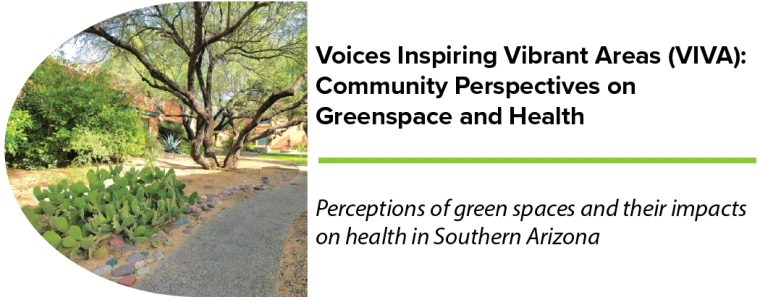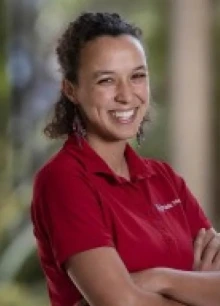SCORCH Research
SCORCH supports a range of cross-disciplinary research to support community health and resilience in response to health threats from climate change.
Arid lands are home to one in three people, totaling a population of more than 2 billion spanning the globe. Arid land communities are facing multiple climate change-exacerbated threats impacting health including extreme heat events, wildfires, dust storms, biodiversity loss, emerging pathogens, poor air quality, and drought. The Southwest Center on Resilience for Climate Change and Health (SCORCH) brings together transdisciplinary research groups to conduct team-science projects addressing the health needs of arid lands communities adapting to climate change.
SCORCH Research Projects
SCORCH Faculty Publications
Melissa Furlong, Shawn Beitel, Reagan Conner, Jaclyn Goodrich, Xinxin Ding, Matt Rahn, Kelcey Stricker, Aaron Guggenheim, Alexander Hamilton, Derek Biering, Jeff Hughes, John Gulotta, Cynthia Porter, James Hollister, Jefferey Burgess
This new study found that firefighters exposed to the Palisades and other fires had changes in their immune system and inflammatory response protein pathways.
Published in the Journal of Occupational and Environmental Medicine.
Rietta S. Wagoner, Nicolás I. López-Gálvez, Isaiah J. Casarez, Robert A. Canales, Paloma I. Beamer, Leslie V. Farland, Frank A. von Hippel, Jill G. de Zapien, Cecilia B. Rosales, Melissa A. Furlong
Agricultural workers perform physically demanding labor in extreme heat, increasing their risk for kidney injury. Agricultural workers are also exposed to nephrotoxic metal(loid)s, yet little research examines the combined effects of heat and metal(loid) exposure on kidney health. This study assessed how simultaneous exposure to metal(loid)s and heat impacts acute kidney injury (AKI) and kidney function over time.
Published in Environmental Research
Melissa A. Furlong, Tuo Liu, Alesia Jung, Shawn Beitel, Jeff Hughes, Randy Krause, Judith M. Graber, Miriam M. Calkins, Antonia M. Calafat, Julianne C. Botelho, Matthew Huentelman, John Gulotta, Jaclyn M. Goodrich, Jefferey L. Burgess
Highlights
• Examined cross-sectional associations of PFAS exposure with microRNA in firefighters.
• Identified differential expression for miRNAs in relation to n-PFOS and Sm-PFOS.
• Several disease pathways were enriched for Sm-PFOS, PFHxS, PFDA, and n-PFOS.
• Pathways enriched for several cancers, autoimmune, and neurological outcomes.
Kimberly L. Parra, Leslie V. Farland, Robin B. Harris, Matthew Toro, Melissa Furlong
This study investigates the relationship between neighbourhood deprivation and risk of Gestational Diabetes Mellitus using Arizona state birth records.
Published in the Paediatric and Perinatal Epidemiology.
Minwoo Ahn, Ladd Keith, and Heid E. Brown
Researchers used the National Emergency Medical Services Information System (NEMSIS) data from 2021 to 2023 to compare compare heat-related illness (HRI) in urban and rural areas of the U.S. Authors found that the odds of EMS events in an urban area resulting with a positive outcome for the patient was 1.24 times that of EMS events in rural areas.
Published in the Journal of Climate Change and Health
Melissa Furlong, Kimberly Paul, Kimberly Parra, Alfred Fournier, Peter Ellsworth, Myles Cockburn, Avelino Arellanom, Edward Bedrick, Paloma Beamer, Beate Ritz
Researchers investigated the association between pesticide exposure during pregnancy and the risk of stillbirth. The study, which utilized data from the Arizona Pesticide Use Registry alongside birth certificate data in the state, aimed to assess the impact of various pesticide exposures on stillbirth risk. The study revealed significant associations between stillbirth risk and exposure to specific pesticides during both preconception (the 90 days prior to conception, up through conception) and the first trimester.
Published in the American Journal of Epidemiology
Malini Roy, Ladd Keith, Mona Arora, Fatima Luna, and Julie Robinson
Over 110 representatives from grassroots, nonprofit, government, private sector, labor unions, utilities, and academic organizations in Southern Arizona convened and coproduced a list of gaps and opportunities to improve community heat resilience.
Published in the Bulletin of the American Meteorological Society
Ian Estacio, Cristian Román-Palacios, Joseph Hoover, Xiaojiang Li, Chris Lim
This study develops the UGS Extractor, a web-based application for the automatic extraction of UGS given user inputs of Area of Interest and Date of Interest. To accommodate various types of green spaces, such as parks or lawns, the application additionally allows users to set parameters for the minimum size of each UGS and the Minimum Urban Neighbor Density, enabling customization of what qualifies as UGS.
Published in the The International Society for Photogrammetry and Remote Sensing (ISPRS) Annals











